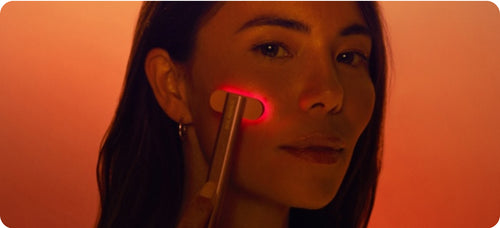


Benefits of Red Light Therapy: Why Light Therapy Belongs in Your Skincare Routine

Special Offer: Get a FREE personalized skincare routine

You’re attempting to view exclusive content only for members in the __tier_name__.
Already have an account? Sign in
You’re attempting to view exclusive content only for members in the __tier_name__.
Already have an account? Sign in

Love Your Solawave Purchase or Your Money Back - Guaranteed for 60 Days! At Solawave, we're so confident in the quality and effectiveness of our products that we offer an unbeatable 60-Day Money-Back Guarantee. We want you to feel completely at ease with your purchase, knowing that your satisfaction is our top priority.
Hassle-Free Returns, On Us! Changed your mind? No problem! If for any reason you're not absolutely delighted with your purchase, returning it is easy. For eligible returns within the 60-day period, we'll provide a pre-paid shipping label, so you can send it back to us without any hassle or extra cost.
Quick Processing, Because We Care: Once we receive your return, we'll get to work on processing your refund right away.

For eligible returns, a pre-paid return shipping label will be provided.
In order to receive a full refund, returns must include the product, all original packaging, instructions, and accessories.
All items must be returned and in good, working condition with normal wear and tear.
Please allow up to 10 business days for processing after your return is received.
We can only process returns for products sold on Solawave.co.
International orders:
Those with unpaid customs fees are not eligible for return. Additionally, we cannot provide free return labels for
international clients. International return shipping fees are not covered by Solawave.

We absolutely ship internationally! On international orders, tax and custom duties will be charged during checkout so that you will not be charged any additional fees upon delivery. During checkout you'll see the full breakdown of the rate under "Shipping Method." It will list the tax and customs fee separately.
If shipping to the UK: to get your order to you, we've partnered with Passport Shipping and they will be the Seller for all orders to the UK for orders under €135.
Unfortunately, we do not ship to the following countries: Afghanistan, Belarus, Bhutan, Brazil, British Indian Ocean Territory, Brunei, Chad, Christmas Island, Cocos (Keeling) Islands, Congo - Kinshasa, Cook Islands, Costa Rica, Curaçao, Falkland Islands, French Southern Territories, Laos, Libya, Mayotte, Mongolia, Nauru, Niue, Norfolk Island, Pakistan, Palestinian Territories, Papua New Guinea, Pitcairn Islands, Russia, Samoa, Solomon Islands, Somalia, South Africa (1 of 9 provinces), South Georgia & South Sandwich Islands, South Sudan, St. Helena, St. Pierre & Miquelon, Taiwan, Timor-Leste, Tokelau, Turkey, Turkmenistan, Tuvalu, U.S. Outlying Islands, Ukraine, Vatican City, Venezuela, Western Sahara, Yemen.
Bear in mind, due to limited processing lanes and reduced air freight availability for shipments leaving the US border, sometimes international packages experience delays. If your tracking number hasn’t updated in more than 2 weeks, please reach out to us so we can investigate the issue for you.